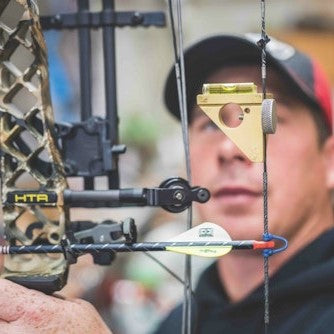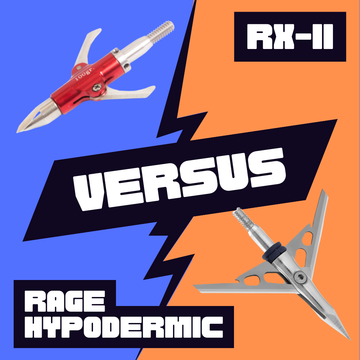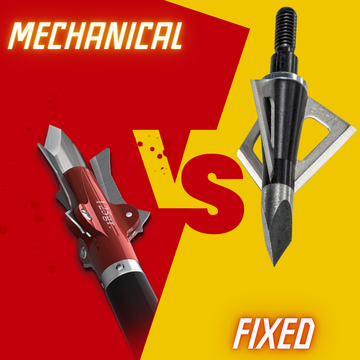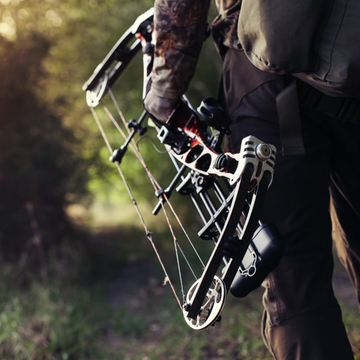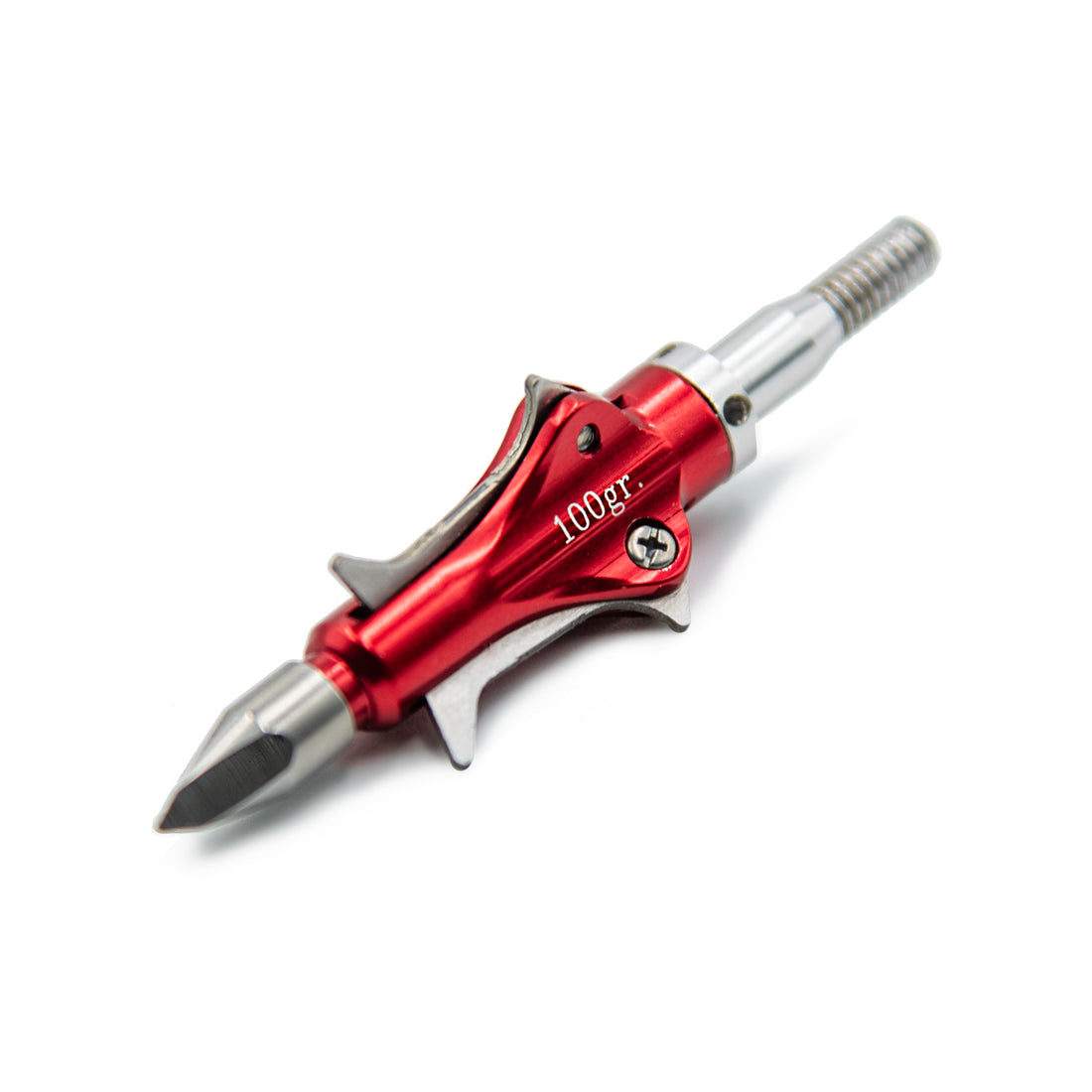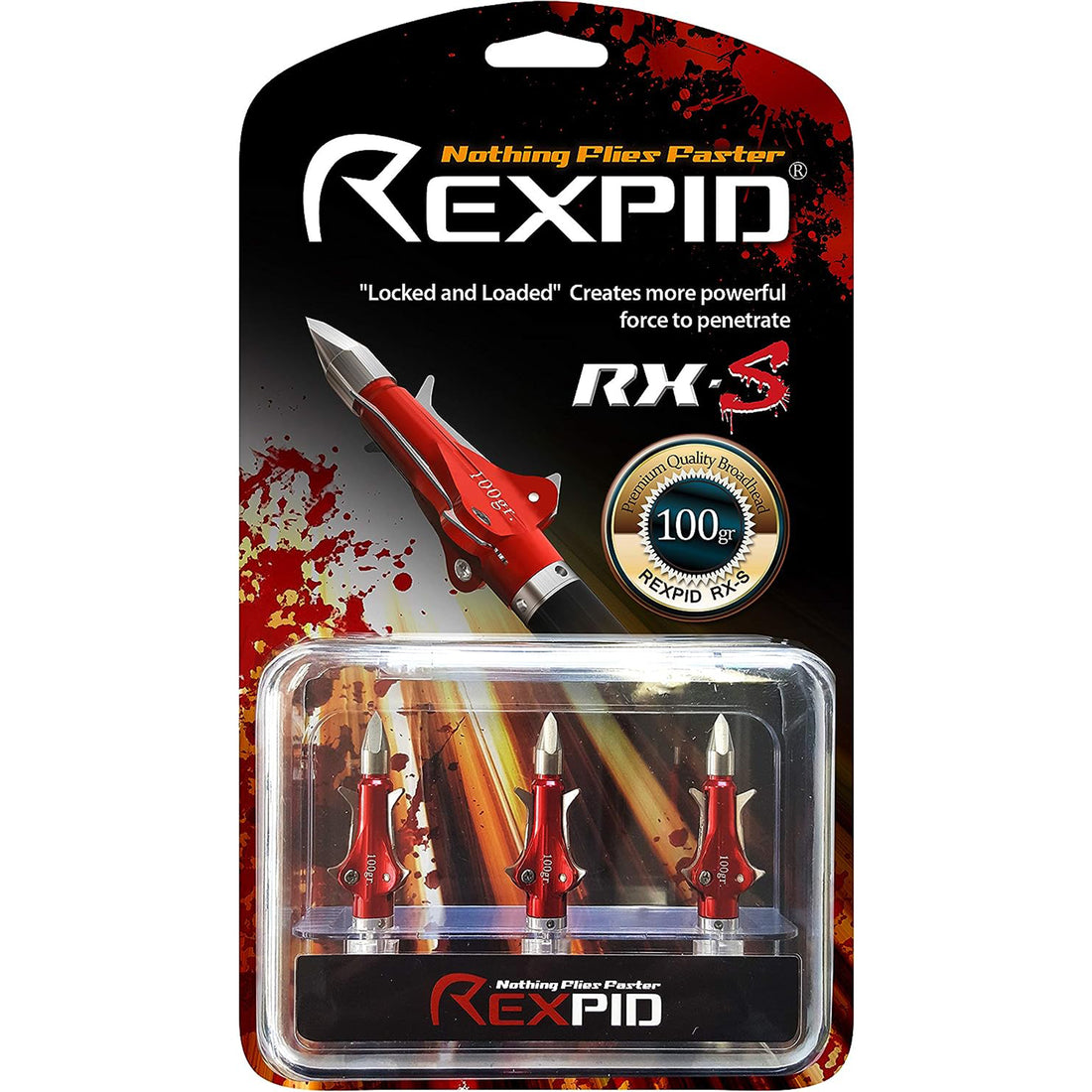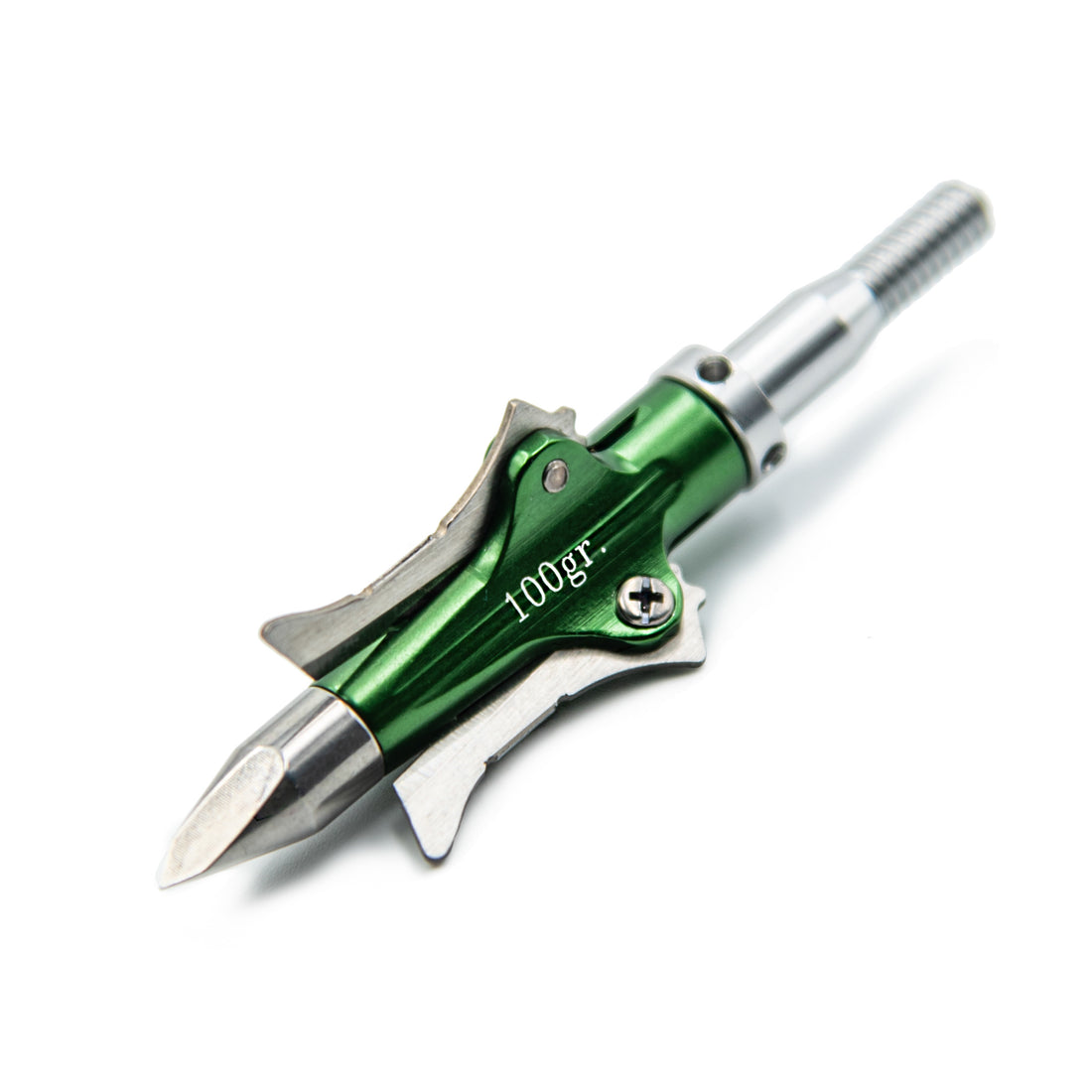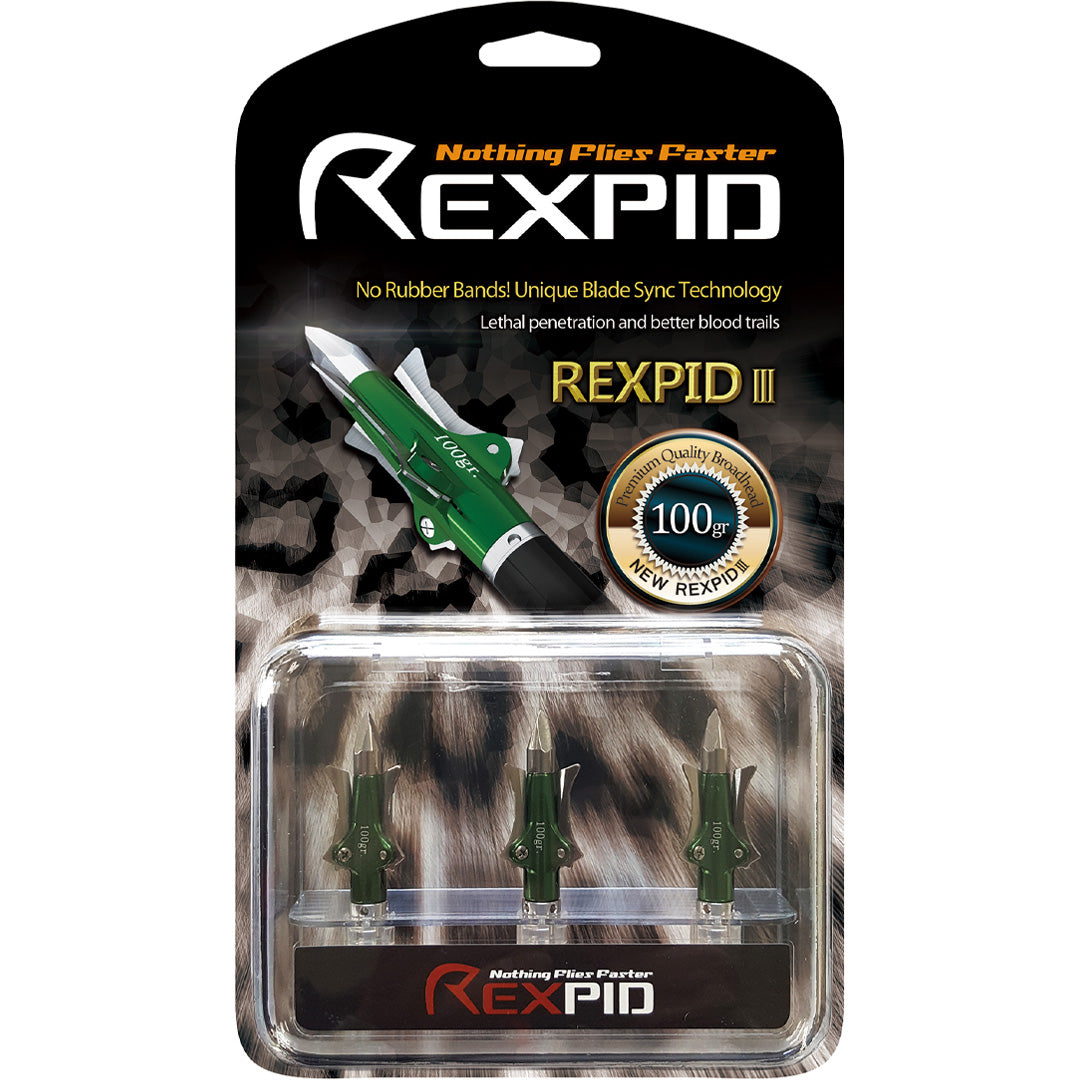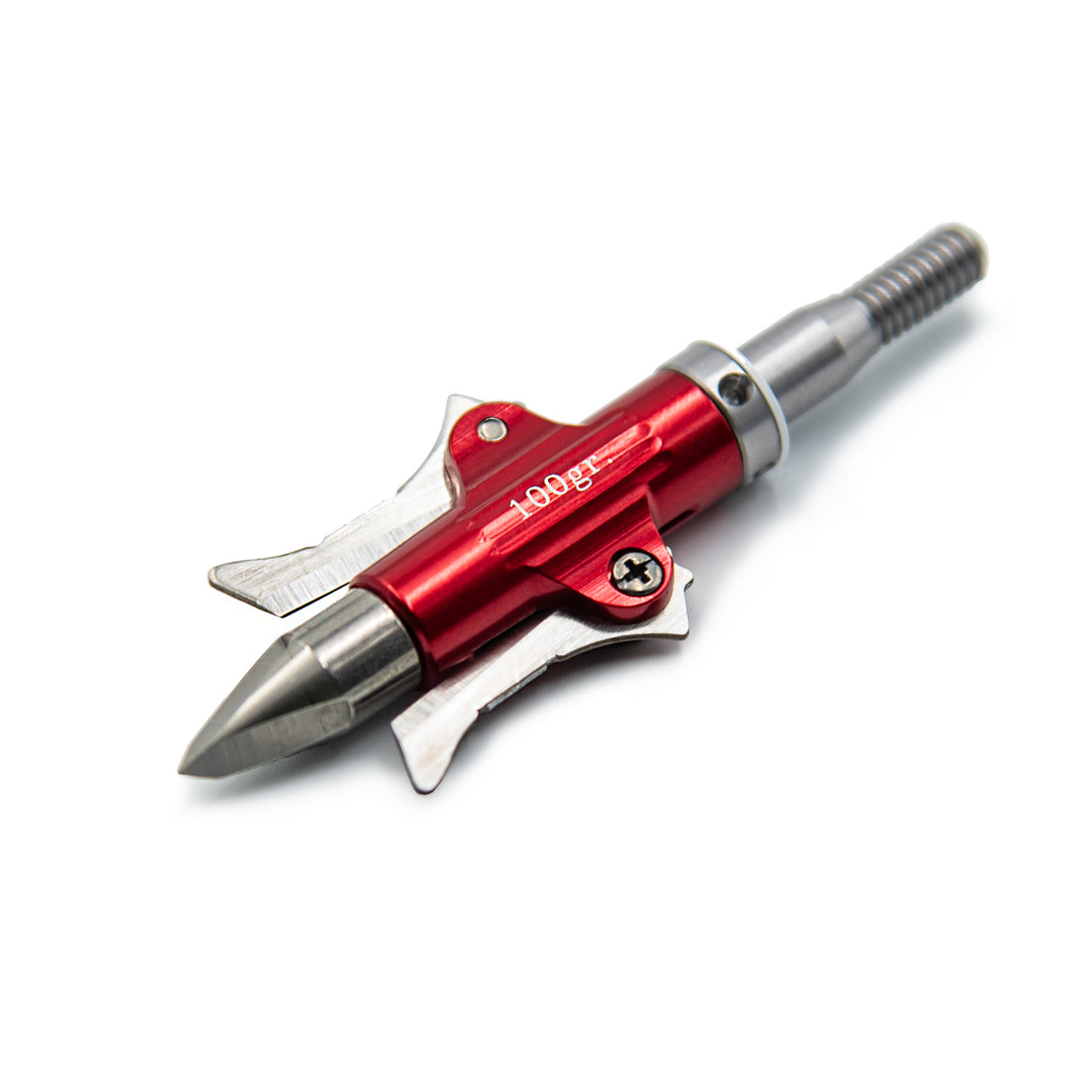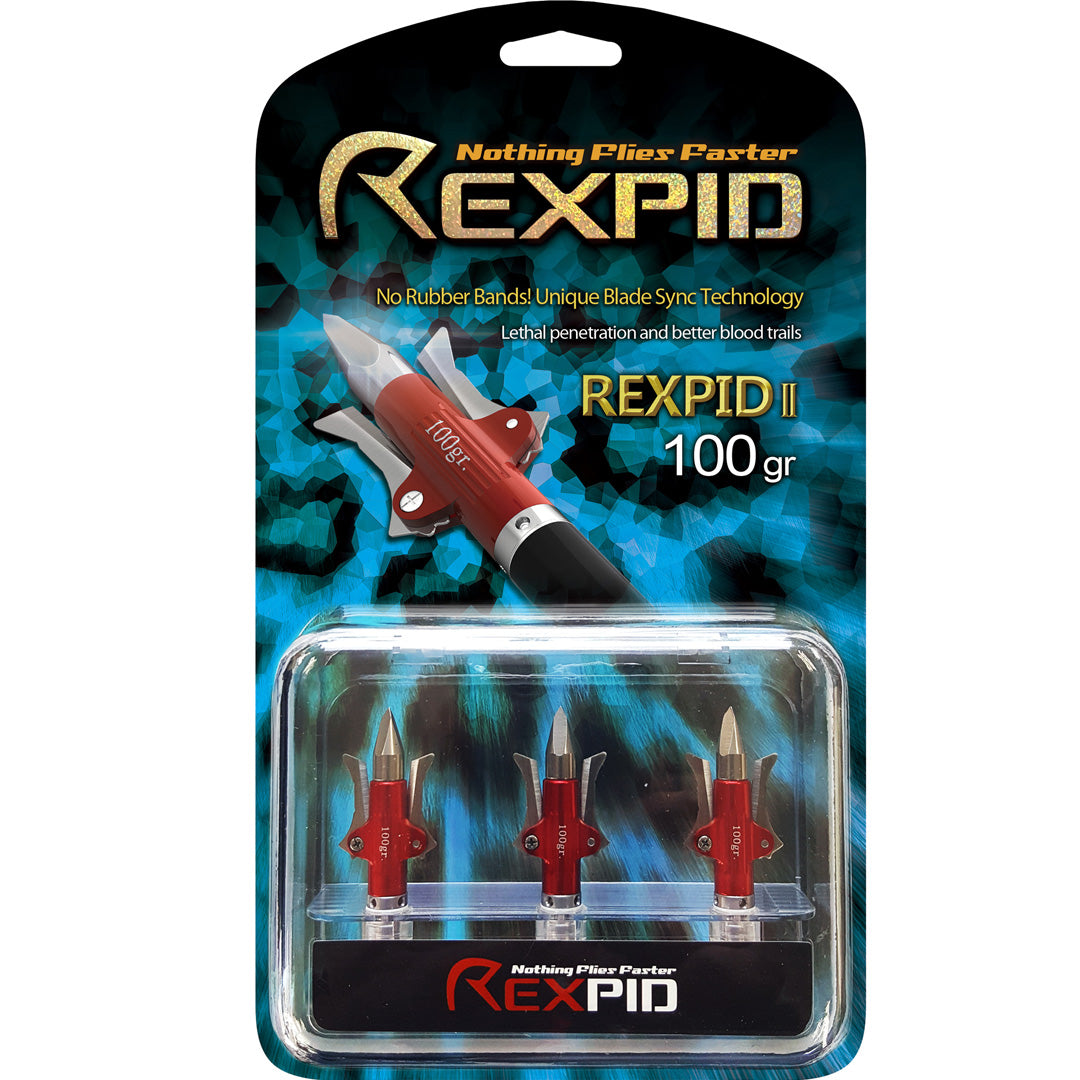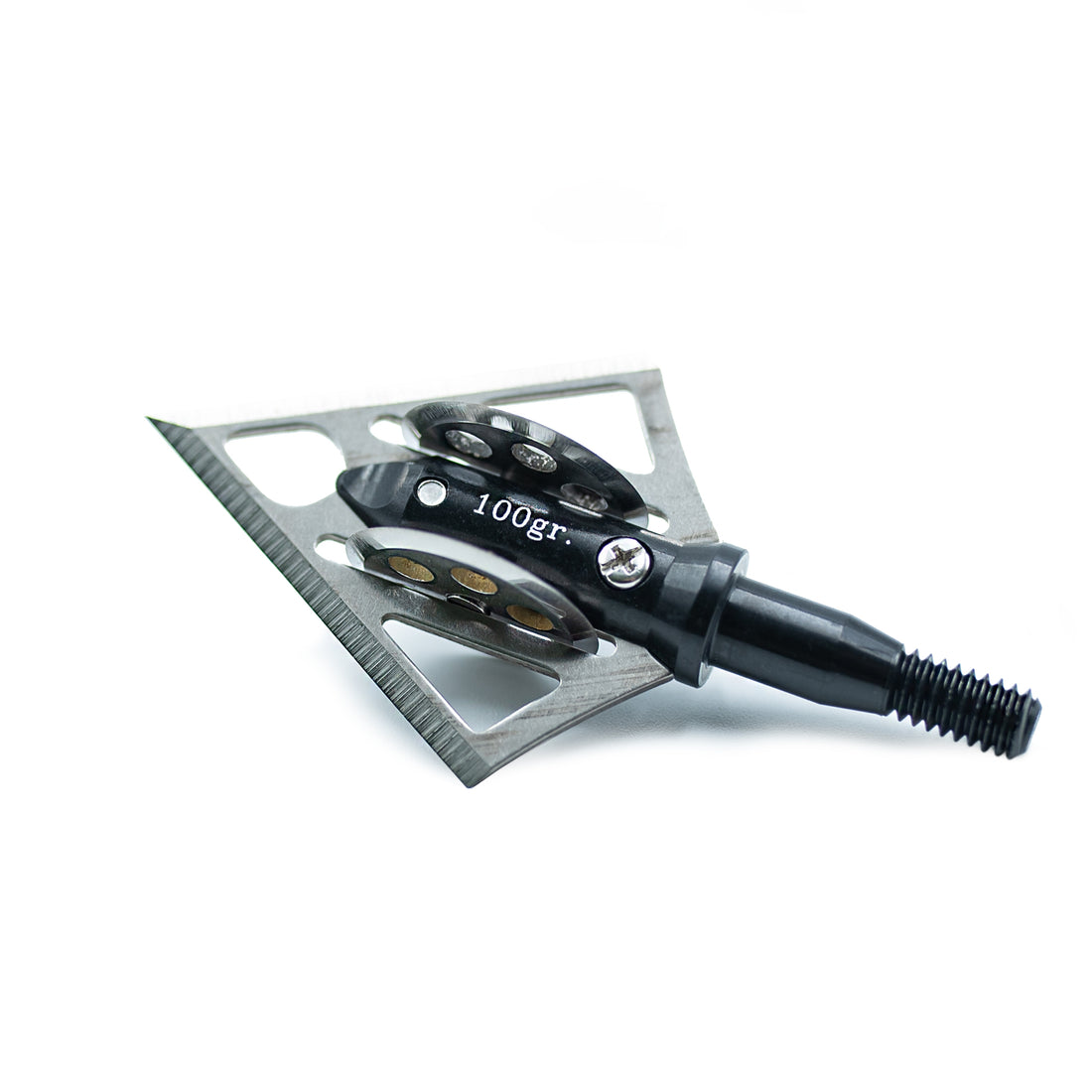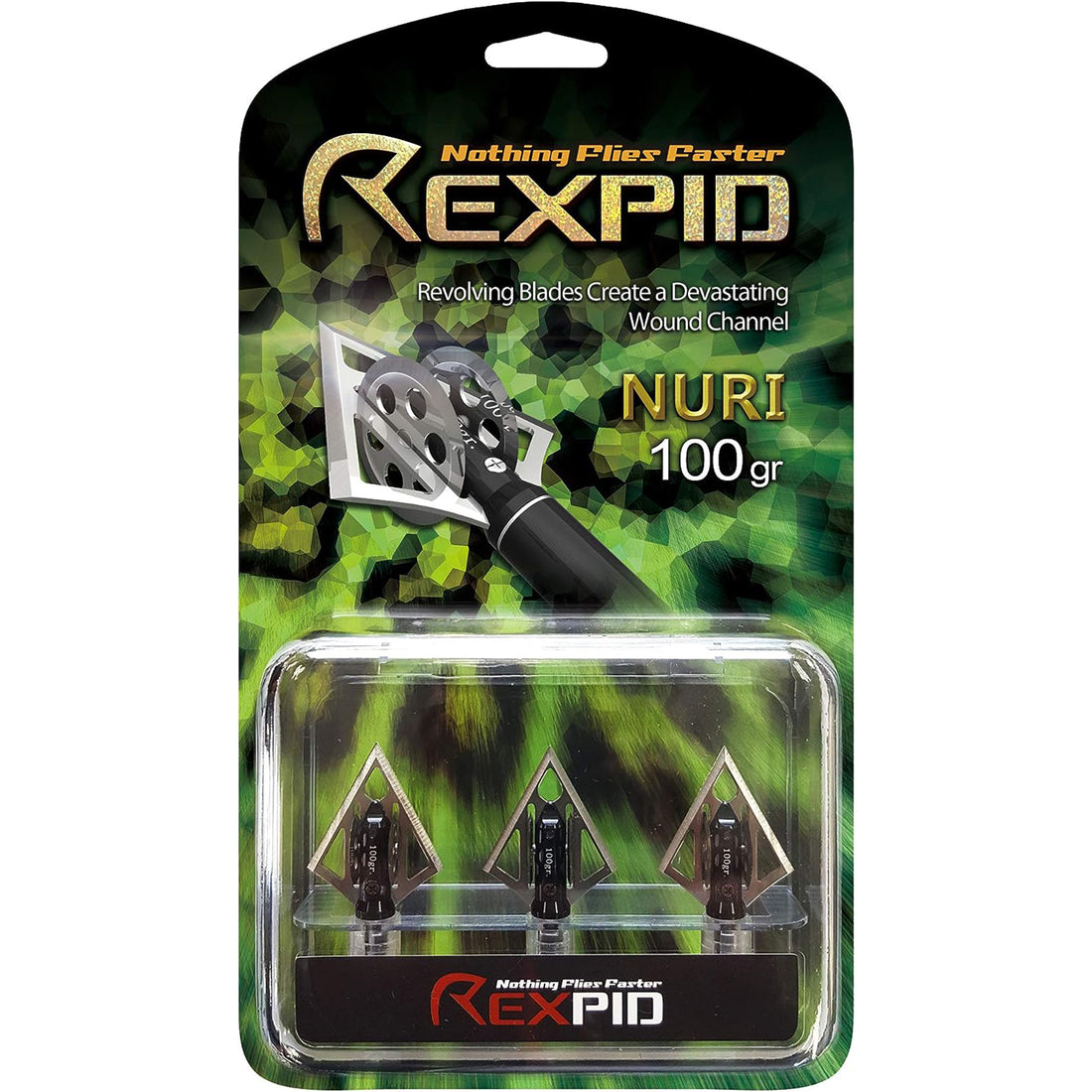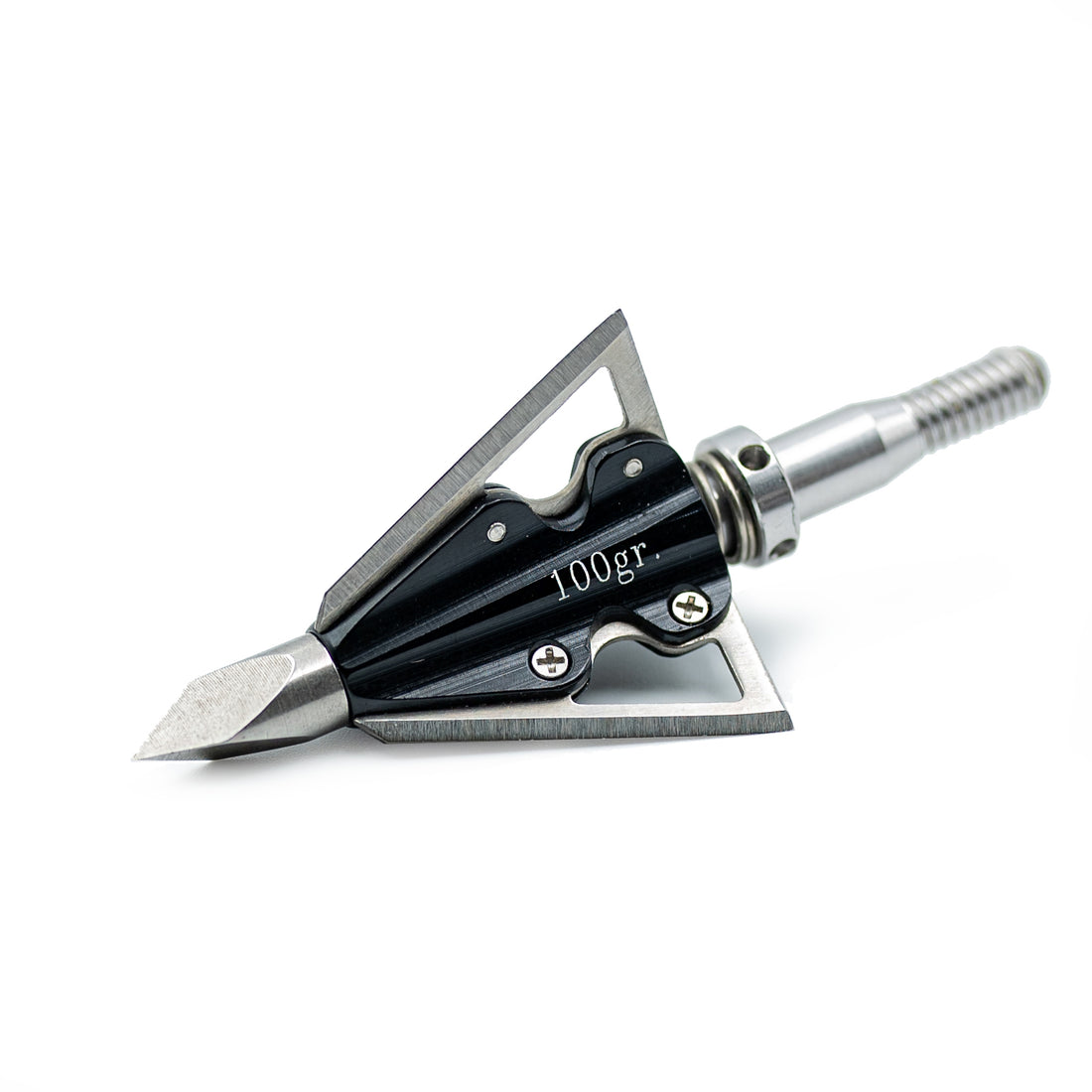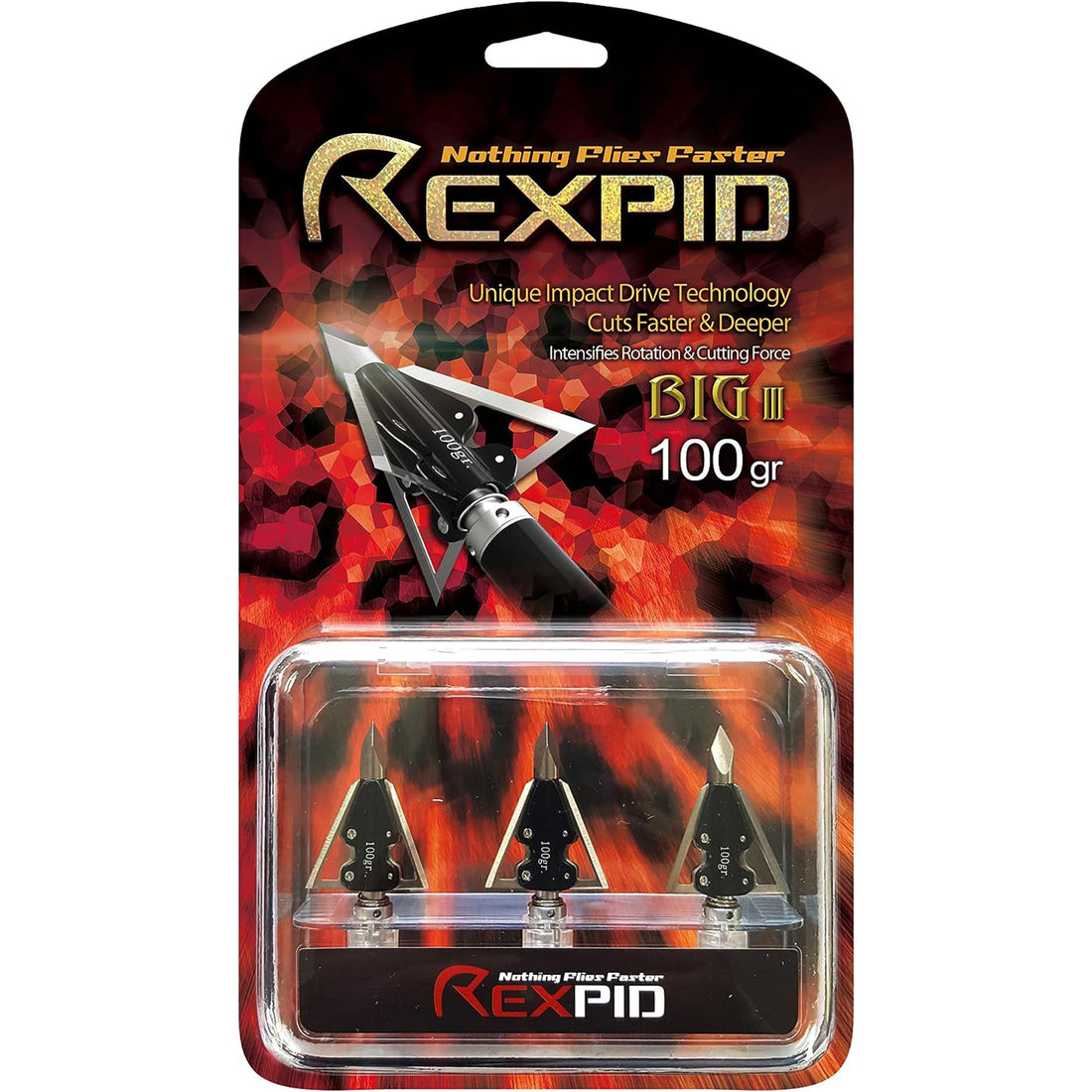What Does Bad Broadhead Flight Look Like?
Bad broadhead flight is when we're either getting erratic shot placement with broadheads or broadheads are simply grouping in a different spot than field points. When this happens, assuming the issue isn't the shooter, it is often due to a person's bow not being "in-tune". By "in-tune", we mean that the arrow is not flying straight and consistently out of the bow because one of the variables (discussed below) is not functioning properly.
It is important to note that you may think your bow is tuned properly because your field points are grouping consistently. But even minor imperfections that may not be apparent with the flight of field points will show up when you put a broadhead on an arrow. Think of a broadhead like fletchings on the front of the arrow. Any minor imperfection in your bow tune will be vastly magnified with a broadhead on the front, which will necessitate further bow tuning, or as some people call it "broadhead tuning". When we use the term broadhead tuning, we are using it to define the process of tuning your bow to get your broadheads and field points to shoot and group together.
Getting a handle on bad broadhead flight is really a process of elimination. There are a multitude of things that could be causing it, but below are the most common causes for most bow brands and a sequential process for what to check if you are experiencing erratic broadhead flight, or your broadheads are grouping differently than your field points.
- Cam Timing
If your broadhead tipped arrows are not grouping with your field points, the first thing to check should be your cam timing. Cams control the strings and cables, which all work together to give a bow its draw cycle. This is where your peak draw weight and let off come from. When you release your string, (assuming you have a dual cam system), your cams should be rotating in unison. If the two cams are rotating out of sync, it can "throw" your arrow. Oftentimes, this is where high/low hits come from once broadheads are screwed on. This is due to either the top or bottom cam being faster than the other, causing the arrow to not fly out of the bow straight.
Checking cam timing is best done by way of a draw board. This gives one the ability to really see the big picture of what's going on. If the draw stops on the cam aren't hitting the cable or limb at the exact same time, it would mean that the cams are out of time. Many of the parts of your bow are dynamic, meaning they can move. Your strings and cables in particular, stretch over time as you shoot. That stretch will change the timing of your cams, and necessitate you to adjust your timing. There are several ways to adjust your cam timing, which we won't discuss here, but the main point is to get those cams in time for a more consistent shot.
- Arrow Spine and Straightness
If your arrows are not spined correctly for your draw weight, length and arrow weight, it can cause erratic arrow flight. That erratic arrow flight might not show up when shooting field points, but as we stated earlier, can be dramatically magnified when shooting broadheads. The spine stiffness has a tremendous effect on how much flex is put upon the arrow on the shot, and your spine will determine how quickly the arrow recovers from that flex. An arrow that is under spined (not stiff enough) will tend to hit right. An arrow that is over spined (too stiff) will usually hit left.
Paper tuning can be a big help in diagnosing improper arrow spine. If you're not shooting a perfect bullet hole through paper at a distance you are comfortable with (assuming your form is on-point), that tells you that the arrow is not flying straight. Not getting a perfect bullet hole can be the result of cam timing or your rest not being positioned properly (see below for more on that), but if you find yourself getting inconsistent tears through paper (i.e. one shot it is left, the next it is right), or if it feels like you are chaisng your tail moving your rest back and forth and are unable to shoot a bullet hole, your arrow is likely the culprit.
Most arrow manufacturers have spine charts that you can use to make sure you're shooting the right spine for your particular set up draw weight/speed of your arrow, arrow length, and arrow weight all affect your spine stiffness. Ensuring you have the right spine stiffness is a relatively easy problem to diagnose, but it is critical for consistent broadhead flight.
Along with arrow spine, arrow build and how straight your arrow and any inserts or outserts are seated is important. Spinning arrows on an arrow spinner will shine light on any inconsistencies in straightness that may exist. When you spin an arrow, you are looking for any wobble in the arrow or any of the attachments on your arrow such as any inserts, outserts or nocks. After that is tested, screw on a broadhead and make sure it also spins without any wobble as well. If it does wobble, make sure it is seated properly in the end of your arrow.
- Arrow Rest
Once you know your cams are timed and arrows are built properly, the next area to check is your arrow rest. If your cams are timed and your arrows are properly spined, and yet your broadheads are grouping well, just in a different spot than your field points, it is likely the result of your rest not being positioned correctly relative to your nock point and string.
There are a few different types of rests out there, but they are all responsible for the same thing. The rest is what guides the arrow through the shot and off of the string. I like to think of it like training wheels on a bike before old Dad sets ya off on your own. It has a huge impact on how straight, or not straight, an arrow is flying. If your rest is too far left, it will guide your arrow to shoot slightly left. If it's slightly too far right, your arrow will shoot to the right. Again, remember that you can be shooting bulls eyes all day with field points, but having a rest that is as little as 1/32" off can cause your broadhead tipped arrows to impact a significantly different spot on the target.
How to mount and position a limb driven or cable driven rest is dependent on several factors. Every bow manufacturer will have a recommended setting for where to position your rest in relation to your riser and nock point, and will help get your rest close to where it will need to be. If you've done that, paper tuning is a fantastic place to start to check the position of your arrow rest. It will shine light on any left/right or high/low inconsistencies in flight. When making adjustments on a rest, a lot goes a long way, so make very minor movements. A 1/32 or even 1/64 of an inch can have a significant impact on how your arrow flies. Micro adjust rests are a huge help when making small adjustments.
Lastly, functionality should also be paid attention to. If a rest isn't functioning properly, like dropping away in time, this will have an effect on arrow flight.
- Nock Tuning
Nock tuning, to the extent it is valuable, should be the very last step in the process. If your cams are functioning properly, your arrows are spined correctly and your rest is positioned where it needs to be, and yet you still get one or more arrows with broadheads that just do not want to group with the rest of your broadhead tipped arrows, nock tuning can help. If you are nock tuning, you should already have arrows with field points and broadheads that group together. This fine-tuning process is really designed to tweak individual arrows that are not flying like the majority of your arrows with broadheads on them.
Nock tuning is when you turn the nock 90 or 120 degrees to position the arrow differently as it flies off of your string. Doing this will change how the arrow flexes as it leaves the string, and theoretically can improve how the arrow recovers and flies after leaving your bow string. If you're confident that your bow is tuned, and your form and shot are not the issue, nock tuning can help get individual arrows to fly more consistently.
- Operator Error
Yeah, gear is not the end all be all fix to your archery problems, I promise. The fact of the matter is we are nowhere near perfect and more times than not, it seems issues arise more on the side of the shooter, than on the gear.
What I'm getting at here is that you also need to evaluate yourself, your shooting, and your form. Take the time to get some proper coaching by someone much more experienced than yourself. Heck, just your range buddy could help to an extent. We have a tendency to build bad habits without even knowing and having someone from the outside looking in can bring those to light. That’s all for today and have a great rest of your day!

